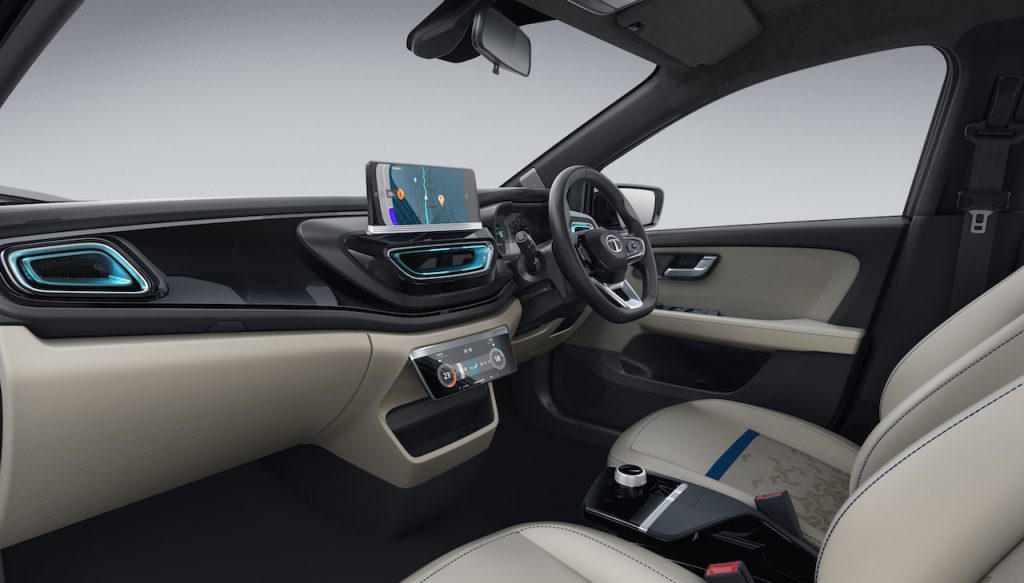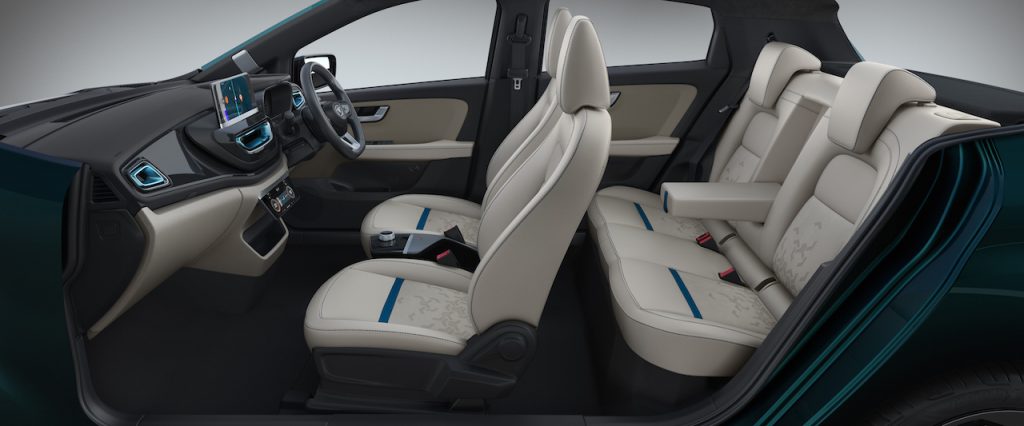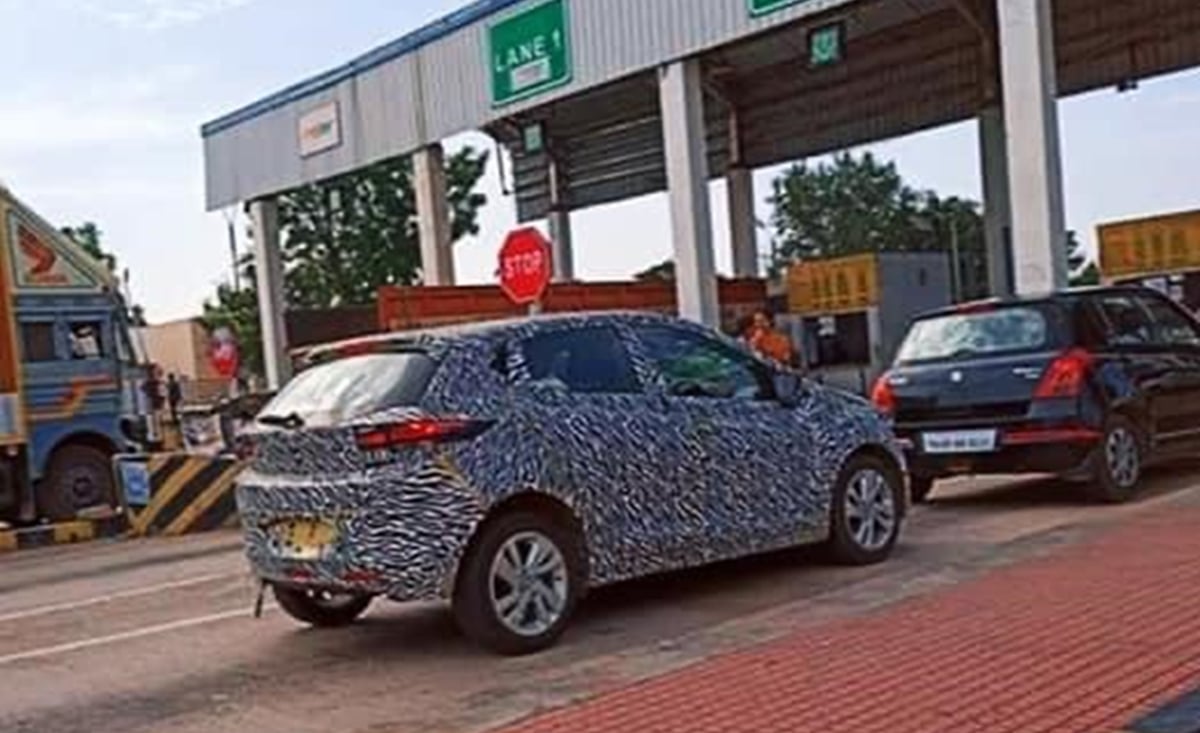CarBlogIndia has uploaded an image of a camouflaged Tata Altroz EV from an expressway toll booth. The electric variant is fundamentally the same design except that it would have subtle styling differences to set it apart from the conventional vehicle.
The Altroz electric hatchback was showcased at the Geneva Motor Show 2019. It is built on the brand-new lightweight, modular and flexible AgiLe Light FLeXibLe Advanced’ (ALFA) Architecture and Tata Motors called it a “premium urban car” that is designed to meet the “constantly evolving aspirations” of customers.

The interior of the city car featured a modern aero command center with a cockpit-like theme. It was created with enhanced haptics and premium materials to give it a “feeling of being in a premium environment from the future.” The upper display on the dashboard provides navigation and audio controls while the lower floating screen is for controlling the HVAC. Other interesting features include a dial for the driving mode selection and an electric parking brake both positioned towards the rear of the front seats.

The athletic exterior of the Altroz electric was previewed by the Tata 45X concept that laid stress on the technology, connectivity and performance. The design of the Altroz EV differs from the normal version with its signature humanity line in blue that flows into the LED headlamps and a “digitally inspired” lower grille.

Tata Motors has given out only some specifications of the Altroz electric. Powered by a permanent magnet AC Motor with a single-speed gearbox and a “high energy density battery pack”, it offers a range of 250 – 300 km on a single charge. The vehicle presented in Switzerland measured 3988 mm long, 1754 mm wide, 1505 mm tall with a wheelbase of 2501 mm.

Tata Altroz electric – Range, Acceleration and Charging Time
When it comes out next year, expect the Altroz EV to share its internals with the Nexon EV. It will feature the ‘Ziptron’ permanent-magnet AC motor that makes 129 PS and 245 Nm, fed by the 30.2 kWh liquid-cooled lithium-ion battery that can be charged to 80% in 60 minutes through a DC fast charger and to 100% in 8-9 hours through the 15 amp household socket. 0 to 100 kmph acceleration should take about 9.5 seconds in the Altroz EV.
One of the features that will not be available on the Nexon or the Altroz electric is battery swapping.
Tata Motors will have no competitors for the Altroz electric in the foreseeable future (given it launches the model by the end of 2020).

Tata Altroz Electric Price & Summary
- Range – 300 km in a single charge (real world range expected to be close to 200 km)
- Top features – Touch-operated HVAC, rotary gear for selecting the driving mode and electric parking brake
- Charging time – 80% charge in 60 minutes through DC fast-charging, 100% charge in 9 hours through a household socket
- Estimated release date – Late 2020
- Expected price – INR 13-14 lakh (ex-showroom, not inclusive of the FAME II subsidy of INR 10,000 per kWh)
[Source – Twitter.com & CarBlogIndia.com]

![Will the launch of the Tata HBX EV get pushed to 2023? [Update]](https://electricvehicleweb.com/wp-content/uploads/2020/12/Tata-HBX-H2X-Hornbill-interior-dashboard-spy-shot-350x166.jpg)
![Everything we know about the upcoming Tata Altroz EV [Update]](https://electricvehicleweb.com/wp-content/uploads/2020/02/Tata-Altroz-EV-side-view-1-Auto-Expo-2020-350x234.jpeg)
![New Tata Safari a serious candidate for an electric vehicle [Update]](https://electricvehicleweb.com/wp-content/uploads/2021/02/Tata-Safari-EV-350x242.jpg)